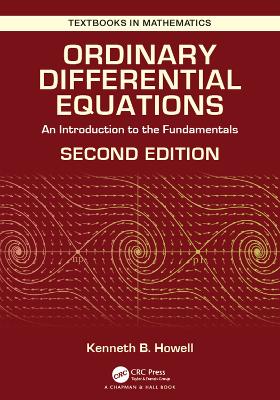Textbooks in Mathematics
2 total works
Fourier analysis is one of the most useful and widely employed sets of tools for the engineer, the scientist, and the applied mathematician. As such, students and practitioners in these disciplines need a practical and mathematically solid introduction to its principles. They need straightforward verifications of its results and formulas, and they need clear indications of the limitations of those results and formulas.
Principles of Fourier Analysis furnishes all this and more. It provides a comprehensive overview of the mathematical theory of Fourier analysis, including the development of Fourier series, "classical" Fourier transforms, generalized Fourier transforms and analysis, and the discrete theory. Much of the author's development is strikingly different from typical presentations. His approach to defining the classical Fourier transform results in a much cleaner, more coherent theory that leads naturally to a starting point for the generalized theory. He also introduces a new generalized theory based on the use of Gaussian test functions that yields an even more general -yet simpler -theory than usually presented.
Principles of Fourier Analysis stimulates the appreciation and understanding of the fundamental concepts and serves both beginning students who have seen little or no Fourier analysis as well as the more advanced students who need a deeper understanding. Insightful, non-rigorous derivations motivate much of the material, and thought-provoking examples illustrate what can go wrong when formulas are misused. With clear, engaging exposition, readers develop the ability to intelligently handle the more sophisticated mathematics that Fourier analysis ultimately requires.
The Second Edition of Ordinary Differential Equations: An Introduction to the Fundamentals builds on the successful First Edition. It is unique in its approach to motivation, precision, explanation and method. Its layered approach offers the instructor opportunity for greater flexibility in coverage and depth.
Students will appreciate the author’s approach and engaging style. Reasoning behind concepts and computations motivates readers. New topics are introduced in an easily accessible manner before being further developed later. The author emphasizes a basic understanding of the principles as well as modeling, computation procedures and the use of technology. The students will further appreciate the guides for carrying out the lengthier computational procedures with illustrative examples integrated into the discussion.
Features of the Second Edition:
- Emphasizes motivation, a basic understanding of the mathematics, modeling and use of technology
- A layered approach that allows for a flexible presentation based on instructor's preferences and students’ abilities
- An instructor’s guide suggesting how the text can be applied to different courses
- New chapters on more advanced numerical methods and systems (including the Runge-Kutta method and the numerical solution of second- and higher-order equations)
- Many additional exercises, including two "chapters" of review exercises for first- and higher-order differential equations
- An extensive on-line solution manual
About the author:
Kenneth B. Howell earned bachelor’s degrees in both mathematics and physics from Rose-Hulman Institute of Technology, and master’s and doctoral degrees in mathematics from Indiana University. For more than thirty years, he was a professor in the Department of Mathematical Sciences of the University of Alabama in Huntsville. Dr. Howell published numerous research articles in applied and theoretical mathematics in prestigious journals, served as a consulting research scientist for various companies and federal agencies in the space and defense industries, and received awards from the College and University for outstanding teaching. He is also the author of Principles of Fourier Analysis, Second Edition (Chapman & Hall/CRC, 2016).

